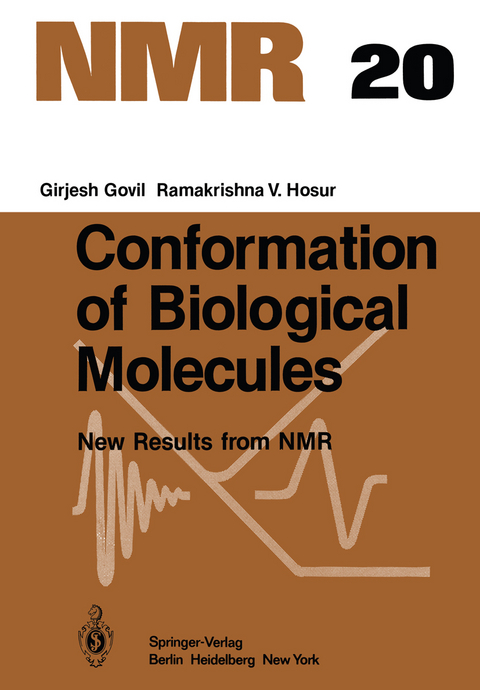
Conformation of Biological Molecules
Springer Berlin (Verlag)
978-3-642-68099-1 (ISBN)
1 General Theory.- 1.1 Introduction.- 1.2 What is Conformation?.- 1.3 Conformational Theory.- 1.4 Structure of Long-Chain Polymers.- 1.5 Problems in NMR Studies of Biological Molecules.- 2 NMR Techniques in Conformational Studies.- 2.1 Coupling Constants.- 2.2 Chemical Shifts of Hydrogen-Bonded Protons.- 2.3 Magnetic Anisotropy of Chemical Bonds or Groups.- 2.4 13C Chemical Shifts.- 2.5 31P Chemical Shifts.- 2.6 Relaxation Times (T1 and T2).- 2.7 Nuclear Overhauser Effect.- 2.8 Paramagnetic Reagents.- 2.9 Use of Liquid Crystals as Solvents.- 2.10 Deuterium Quadrupole Coupling Constants.- 2.11 Solvent Accessibility.- 2.12 From NMR Parameters to Spatial Structures.- 3 Nucleosides, Nucleotides and Nucleic Acids.- 3.1 Description of Nucleotide Structures.- 3.2 Glycosidic Bond Rotations.- 3.3 Sugar Ring Conformation: Pseudorotation.- 3.4 Backbone Angles.- 3.5 NMR Studies on Nucleosides.- 3.6 Small Nucleotides.- 3.7 Dinucleoside Phosphates and Short Segments of Nucleic Acids.- 3.8 Random-Coil Polynucleotides.- 3.9 Helical Polynucleotides.- 3.10 t-RNA.- 3.11 Drug-Nucleic Acid Interactions.- 4 Amino Acids, Peptides and Proteins.- 4.1 Description of the Structure of Peptide Units.- 4.2 Theoretical Considerations. The ø, ? Maps.- 4.3 NMR Techniques in the Study of Peptide Conformations.- 4.4 Conformations of Amino Acids.- 4.5 Linear Peptides.- 4.6 Cyclic Peptides.- 4.7 Homopolymeric Peptides. Helix-Coil Transition.- 4.8 Characterization of Protein Structures by NMR.- 4.9 Protein-Nucleic Acid Interaction.- 5 Polysaccharides.- 5.1 Structures of Polysaccharides and Carbohydrates.- 5.2 Conformations of Monosaccharides.- 5.3 Conformations of Polysaccharides.- 5.4 Glycoproteins and Peptide-Carbohydrate Interactions.- 6 Lipids and Molecular Organization in Membranes.- 6.1Biomembranes.- 6.2 General Properties of Phospholipids.- 6.3 Conformations of Phospholipids.- 6.4 Membrane Organization and Fluidity.- 6.5 Lipid-Protein and Lipid-Cholesterol Interactions.- 7 Acknowledgements.- 8 References.- 9 Appendix.- 10 Subject Index.
| Erscheint lt. Verlag | 7.12.2011 |
|---|---|
| Reihe/Serie | NMR Basic Principles and Progress |
| Zusatzinfo | VIII, 218 p. |
| Verlagsort | Berlin |
| Sprache | englisch |
| Maße | 170 x 244 mm |
| Gewicht | 407 g |
| Themenwelt | Naturwissenschaften ► Chemie ► Analytische Chemie |
| Naturwissenschaften ► Physik / Astronomie ► Angewandte Physik | |
| Schlagworte | biopolymers • DNA • Molecules • Molekularbiologie • X-Ray |
| ISBN-10 | 3-642-68099-2 / 3642680992 |
| ISBN-13 | 978-3-642-68099-1 / 9783642680991 |
| Zustand | Neuware |
| Informationen gemäß Produktsicherheitsverordnung (GPSR) | |
| Haben Sie eine Frage zum Produkt? |
aus dem Bereich


